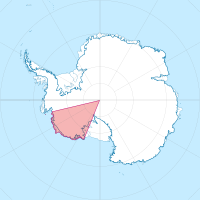
Photo from wikipedia
Abstract Boundary layer flow in the industrial applications such as extrusion processes is attributable to impulsive movement of an extensible moving surface. However, the velocity of the extruded surface may… Click to show full abstract
Abstract Boundary layer flow in the industrial applications such as extrusion processes is attributable to impulsive movement of an extensible moving surface. However, the velocity of the extruded surface may not necessarily be linear. Hence, this study proposes a unique model to investigate the unsteady stagnation point flow in hybrid nanofluid (Al2O3-Cu/H2O) induced by exponentially permeable stretching/shrinking sheet with the magnetic field. The system of ordinary differential equations is attained through a simplification of governing partial differential equations by employing appropriate similarity transformation. The numerical computation is determined by utilising the bvp4c procedure in the MATLAB program, which is proficient in generating non-uniqueness solutions. The noteworthy findings revealed that the skin friction coefficient intensifies in conjunction with the local Nusselt number by enhancing the suction/injection parameter and the nanoparticles volume fraction past an exponentially stretching/shrinking sheet. The results also signified that the increment in the unsteady parameter conclusively increases the skin friction coefficient, and the heat transfer rate shows an upsurge attribution resulting from the inclusion of the magnetic parameter towards an exponentially shrinking sheet. Also, the results are evidenced by having dual solutions, which ultimately lead to an investigation of the analysis of the solution stability, thereby validating the feasibility of the first solution. This crucial contribution will help to enhance industrial growth, especially in the manufacturing and processing sectors.
Journal Title: Engineering Science and Technology, an International Journal
Year Published: 2021
Link to full text (if available)
Share on Social Media: Sign Up to like & get
recommendations!